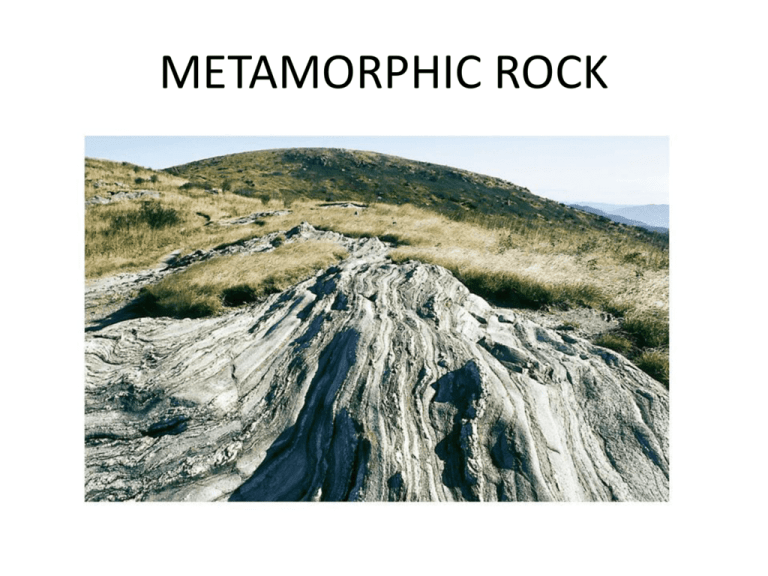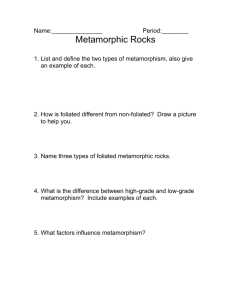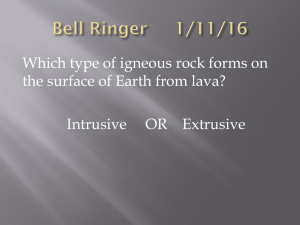Formation of Metamorphic Rock
advertisement

METAMORPHIC ROCK • Metamorphic – Formed from older “parent rock” (either igneous or sedimentary) under intense heat and/or pressure far beneath the earth’s surface. Formation of Metamorphic Rock Meaning to change shape Changes with temperature and pressure, but remains solid Usually takes place deep in the Earth Types of Metamorphism Contact Metamorphism: occurs when rocks are heated by nearby magma Regional Metamorphism: occurs deep in the Earth where pressures build up and are able to create a chemical change in rocks Composition of Metamorphic Rocks • Minerals that were present in the rock when it formed may not be stable in the new temperature and pressure conditions. • Original minerals change into minerals that are more stable in the new conditions. Index Minerals • Many of these minerals ONLY form in metamorphic rocks. Some of these form only at certain temperatures and pressures. • These minerals are known as Index Minerals, and are used to estimate the temperature, depth, and pressure at which a rock undergoes metamorphism. • Ex of Index Minerals – biotite mica, chlorite, garnet, kyanite, muscovite mica, sillimanite, and staurolite. Textures of Metamorphic Rocks Foliated- mineral grains are arranged in planes or bands. - Results when rocks are subjected to both high temperatures and high pressures. - Typically associated with regional metamorphism gneiss As shale is exposed to more and more heat and pressure, it continually changes into different types of metamorphic rock Textures of Metamorphic Rocks Nonfoliated- mineral grains are not arranged in planes or bands -May result when rocks are subjected to high temperatures and low pressures - Typically associated with small scale, contact metamorphism Marble Examples • Sandstone • Shale Quartzite Slate Examples Limestone Marble Granite Gneiss Metamorphic Rock QUESTIONS Determine if the following rock samples are foliated or non-foliated: Amphibolite Quartzite Phyllite Foliated









